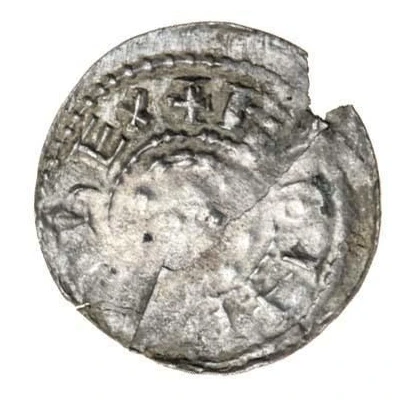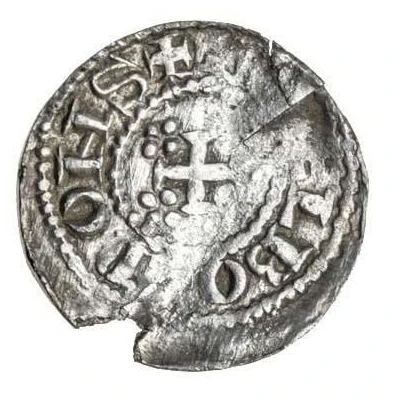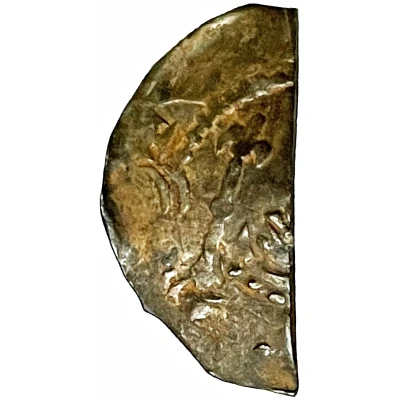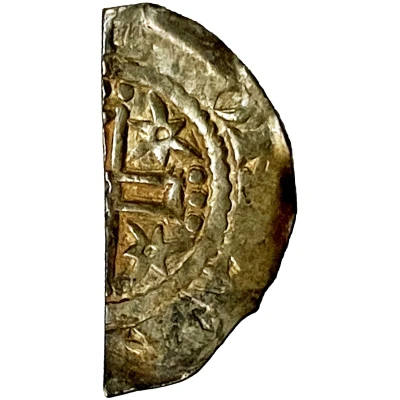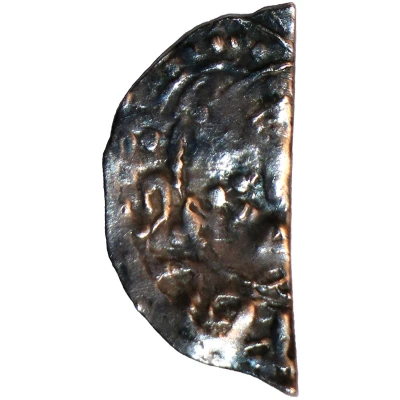
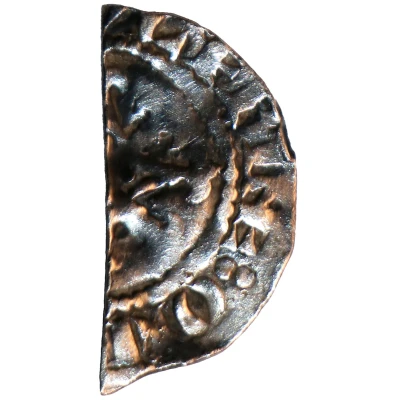

© John Conduitt (CC BY-SA)
Halfpenny - Henry I Quadrilateral on cross fleury type ND
| Silver | 0.7 g | 20 mm |
| Issuer | England (United Kingdom, British Overseas Territories and Crown Dependencies) |
|---|---|
| King | Henry I (1100-1135) |
| Type | Standard circulation coin |
| Years | 1125-1135 |
| Value | ½ Penny |
| Currency | Penny (924-1158) |
| Composition | Silver |
| Weight | 0.7 g |
| Diameter | 20 mm |
| Shape | Half circle |
| Technique | Hammered |
| Orientation | Variable alignment ↺ |
| Demonetized | Yes |
| Updated | 2024-10-08 |
| Numista | N#324986 |
|---|---|
| Rarity index | 97% |
Reverse
Moneyer and mint name around quadrilateral on cross fleury.
Lettering: +ǷVLFǷINE: ON: LV
Translation: Wulfwine of London
Comment
Kings of all England (924-1158), Henry I (1100-35), Quadrilateral on cross fleury type cut halfpenny.Numerous moneyer and mint name variations exist. Uncut penny ref: Sp# 1276, North# 871.
Medieval coins were cut into halves and quarters to provide fractional denominations without the need to strike new coins. It is thought these was generally cut at the mint, although it is also likely to have happened during transactions. Cut halfpennies are known in England from Anglo-Saxon times (c. 750s) until Edward I introduced round farthings and halfpennies in 1279.
Interesting fact
One interesting fact about the Halfpenny - Henry I (Quadrilateral on cross fleury type) ND (1125-1135) coin is that it was minted during the reign of King Henry I of England, who was also known as Henry Beauclerc. He was the youngest son of King William the Conqueror and was known for his administrative and legal reforms, which helped to strengthen the English monarchy. This coin was minted during his reign, which lasted from 1100 to 1135, and it features a unique design that sets it apart from other coins of the time. The quadrilateral on cross fleury design was a common feature of coins during this period, and it is believed to have been inspired by the design of earlier Anglo-Saxon coins. Despite its age, this coin remains a popular collector's item among numismatists and historians, offering a glimpse into the economic and political climate of medieval England.
